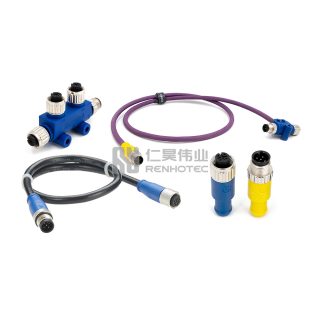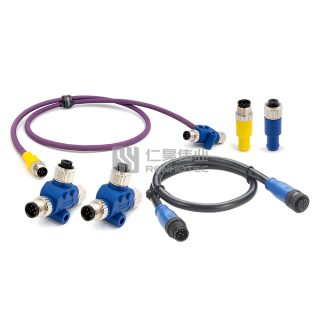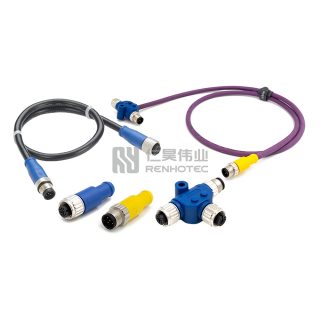Benefits
Ease of Setup: The starter kit simplifies the initial setup process by providing all necessary components.
Compatibility: Ensures that all included components are compatible with each other and with other NMEA 2000 devices.
Expandability: Once the starter kit is set up, the network can be easily expanded by adding more devices and cables.
FAQ
What is NMEA 2000?
NMEA 2000 is a plug-and-play communications standard used for connecting marine instrumentation within vessels. The plug-and-play interface allows devices made by different manufacturers to communicate with each other within the same network without causing interference between devices.
The National Marine Electronics Association (NMEA) is a group founded in 1957 to improve collaboration among electronic device manufacturers. It achieved this by establishing communication standards for electronic devices in marine vehicles. NMEA developed the standard NMEA 0183 and its successor, NMEA 2000. These standards enabled devices from different manufacturers to integrate seamlessly with one another.
What are Key Features and Benefits of NMEA 2000?
NMEA 2000 is a plug-and-play communication protocol that makes it easy to integrate different devices on board. It provides a standardized way for devices to communicate with each other, so you can easily connect a plotter, sonar, engine monitor and other devices to create a comprehensive and integrated onboard system. With NMEA 2000, you can easily manage and monitor your boat's systems, making it easier to navigate and operate your vessel.
The main advantages of NMEA 2000 include its high data transfer rates, which allow devices to exchange large amounts of data quickly and reliably. This is especially useful for devices that require real-time data, such as GPS. The protocol also supports two-way communication, which is important for devices that require feedback or control, such as autopilots or trim planes. In addition, NMEA 2000 is a low-power protocol, which means that devices can be connected to the network without removing the boat's batteries.
What are Components of a NMEA 2000 Network?
The key components include:
Backbone cable: This is the main cable that connects all the devices in the network. The backbone cable is the core of your NMEA 2000 network, and it’s essential to choose the right one for your boat. The cable should be rated for marine use and have a suitable length to reach all the devices on your boat.
Drop cable: This cable connects devices to the backbone and should be run from the backbone to each device location.
Termination resistors: These resistors are installed at each end of the backbone cable to prevent signal reflections and ensure smooth communication between devices. Termination resistors are essential to ensure that your network functions correctly, and they should be installed correctly to avoid any issues.
Power supply: This connection provides power to the network. The power supply should be rated for marine use and have enough power to supply all the devices on your boat.
What is NMEA 2000 Compatibility?
NMEA 2000 is compatible with a wide range of marine electronics and instruments, including: Chartplotters and multifunction displays. Depth sounders and fishfinders. Autopilots and steering systems.
What is the Difference Between NMEA 2000 and NMEA 0183?
NMEA 0183 operates on a 1-to-1 connection method using RS232/RS422, where multiplexers and buffers are required to connect multiple devices ‘together’. NMEA 2000 uses CAN with a backbone / drop cable network system, where all devices on the network talk to one another.
NMEA 2000 simplifies the connection – The NMEA 2000 backbone is a single trunk cable to which the appropriate T-pieces, network cables and terminators can simply screw onto. Unlike connecting NMEA 0183 open cable ends.
What are Required Hardware and Cabling?
The key components include:
Backbone cable: This is the main cable that connects all the devices in the network. The backbone cable is the core of your NMEA 2000 network, and it’s essential to choose the right one for your boat. The cable should be rated for marine use and have a suitable length to reach all the devices on your boat.
Drop cable: This cable connects devices to the backbone and should be run from the backbone to each device location.
Termination resistors: These resistors are installed at each end of the backbone cable to prevent signal reflections and ensure smooth communication between devices. Termination resistors are essential to ensure that your network functions correctly, and they should be installed correctly to avoid any issues.
Power supply: This connection provides power to the network. The power supply should be rated for marine use and have enough power to supply all the devices on your boat.
Does NMEA 2000 Need Termination?
You must install terminators at the ends of an NMEA 2000® backbone for it to function correctly. You can install either two standard terminators or one female terminator and an in-line terminator on an NMEA 2000 network. NOTE: You must not install more than two terminators on an NMEA 2000 network.
What is the Advantage of Multi-port T-Connector?
The NMEA2000 - Multi-port T-Connector is an alternative to the T-connector when multiple ports arerequired from the NMEA2000 backbone to connect other devices. is an alternative to the T-connectorwhen multiple ports are reguired from the NMEA2000 backbone to connect other devices.
👋Let us know how we can help
We look forward to hearing from you! We will respond within 24 hours.




